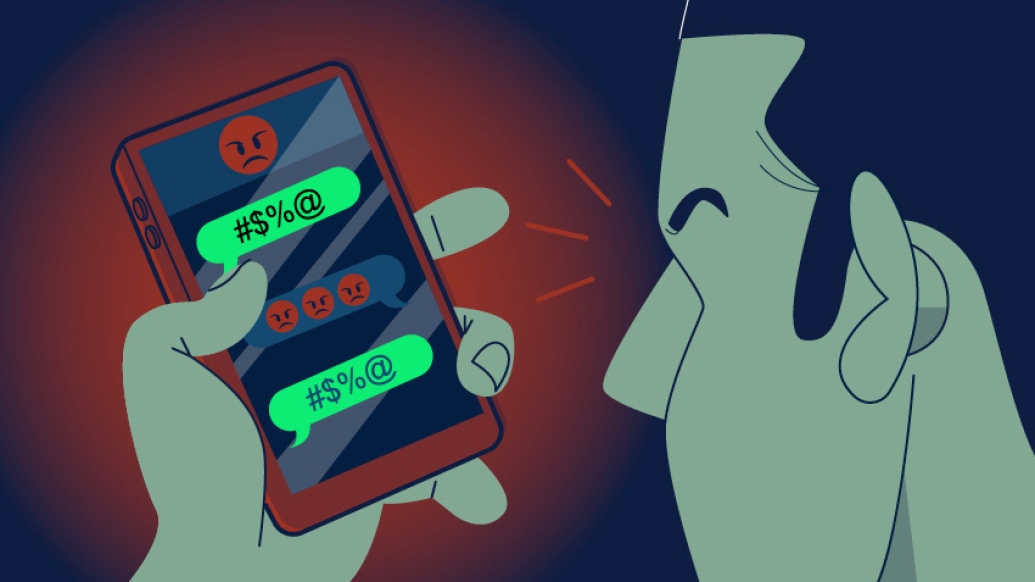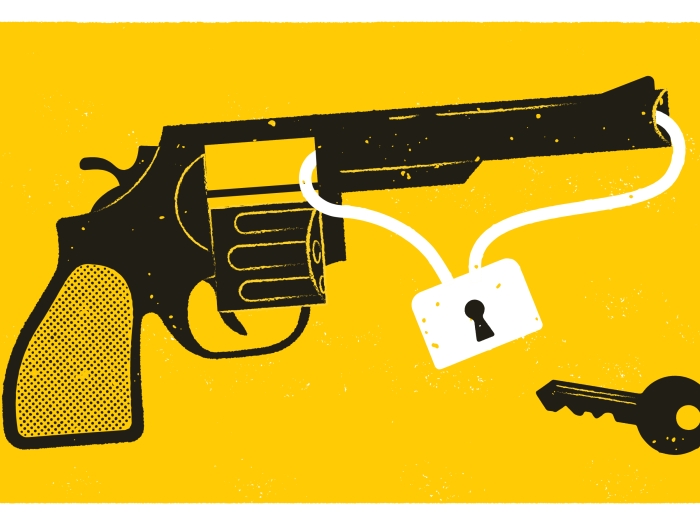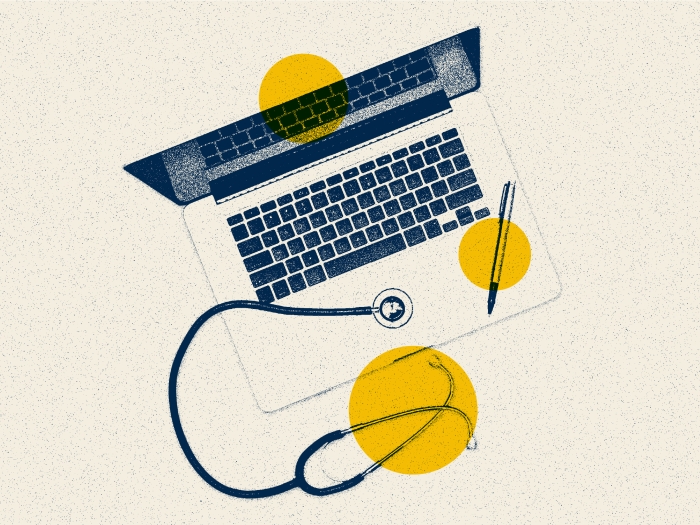Nearly 90% of young adult men believe health care providers should ask male patients about partner abuse.
5:00 PM
Author |

In 2022, technology has the potential to both start relationships and keep them alive, even those crossing continents. Lifting a finger, literally, can land someone "face-to-face" with their partner or spouse.
This increased accessibility – 81% of Americans own a smart phone and 75% own a computer – also allows for more unhealthy behaviors in relationships. Insults, harassment, nonstop messages about a partner's whereabouts and accessing online accounts without permission can all be easily facilitated through technology.
A new study shows that one-quarter of young American men experience this technology-facilitated abuse – both by delivering and receiving it.
"Most partner violence research and program focus on men as only delivering abuse," said Vijay Singh, M.D., assistant professor of emergency medicine, family medicine and internal medicine at University of Michigan Health and senior author of the paper published in the Annals of Family Medicine. "While our study demonstrates men who only deliver technology-facilitated abuse, this broad sample reveals more complexity when looking at men, technology and relationships."
The Michigan Medicine-led study is one of the first to analyze abuse through the lens of technology in a nationally representative sample of adult men in the U.S. This diverse group of 18 to 35-year-olds completed anonymous surveys online.
Researchers found that while 25% of men reported both delivering and receiving abuse using technology, 8% reported only receiving the abuse and 4% disclosed only delivering it. The findings are similar to results of another Michigan Medicine-led study from 2020, which revealed the majority of men involved in intimate partner violence reported both perpetration and victimization.
Health care providers should consider addressing technology-facilitated abuse among male patients, including addressing how men involved in these harmful behaviors may both deliver and receive the abuse, said Laura Seewald, M.D., lead author of the paper, injury prevention research fellow and clinical instructor of emergency medicine at U-M Health.
"There is still limited guidance for identifying and responding to abusive behavior disclosed by adult male patients," Seewald said. "We as clinicians should make it part of routine health care to talk about the ways technology-facilitated abuse can occur for men and be able to give these men good resources and strategies for how to deal with these behaviors they are either delivering or receiving – or likely experiencing both."
Addressing the issue
Interaction with medical and mental health professionals will be key to understanding and addressing men engaged in abusive relationships digitally, researchers say.
Of men surveyed, those with a primary care physician had lower odds of receiving technology-facilitated abuse, while men who had mental health care visits had higher odds of both delivering and receiving abuse.
As healthcare providers develop and evaluate interventions to reduce technology-facilitated abuse among men, we need to think about how we can hold men accountable for harm they cause to their partners while also acknowledging harm they may be receiving.Vijay Singh, M.D.
Despite what many believe, Singh notes, the challenge may not be getting male patients to talk to their providers about abusive behaviors. In the same 2020 study above, 90% of young U.S. adult men believed health care providers should ask male patients about intimate partner violence perpetration and victimization. However, fewer than 15% of these men had ever been asked about intimate partner violence.
"Many men involved in abusive relationships may be interested in receiving help, but they do not know who to talk to," Singh said. "Our data show that the majority of men report both delivering and receiving abuse, and this adds complexity for a healthcare provider to decide what services men most need. As healthcare providers develop and evaluate interventions to reduce technology-facilitated abuse among men, we need to think about how we can hold men accountable for harm they cause to their partners while also acknowledging harm they may be receiving."
Three screening tools for intimate partner violence – the Hurt-Insult-Threaten-Scream domestic violence tool, the Partner Violence Screen and the Index of Spousal Abuse – are validated for women and showed some promise among men in primary care and emergency medicine settings. None have expanded to include technology-focused questions.
At U-M, researchers in emergency medicine and the Injury Prevention Center developed an intervention to reduce violence behaviors among teens called SafERteens, which is currently being implemented at clinical sites across west Michigan. Singh is working to replicate elements of the program for his work with adult men.
Despite all the tools that are available to health care providers, Seewald says, the study highlights how much more work needs to be done when developing effective abuse interventions for men that account for digital mediums.
"Men have been underrepresented not just in terms of thinking about them as being victims in general, but also in terms of the ways to actually give them effective counseling, too," Seewald said. "A lot of the interventions are focused on women because they experience more physical violence in relationships, as well as more significant consequences, including death. There is much more work to do to make relationships safer in America."
If you are experiencing relationship problems or harm, contact the National Domestic Violence Hotline at 1-800-799-SAFE (7233).
Like Podcasts? Add the Michigan Medicine News Break on iTunes, Google Podcasts or anywhere you listen to podcasts.
Additional authors include Richard M. Tolman, Ph.D., M.S.W., from the U-M School of Social Work.
This research was supported by the Robert Wood Johnson and the Foundation and the Veterans Affairs Clinical Scholars Program at the University of Michigan.
Paper cited: "Technology-Facilitated Abuse Prevalence and Associations Among a Nationally Representative Sample of Young Men," Annals of Family Medicine. DOI: 10.1370/afm.2758

Explore a variety of healthcare news & stories by visiting the Health Lab home page for more articles.

Department of Communication at Michigan Medicine
Want top health & research news weekly? Sign up for Health Lab’s newsletters today!





